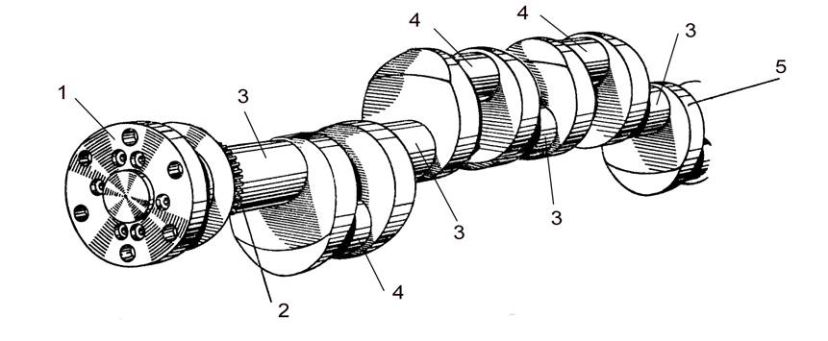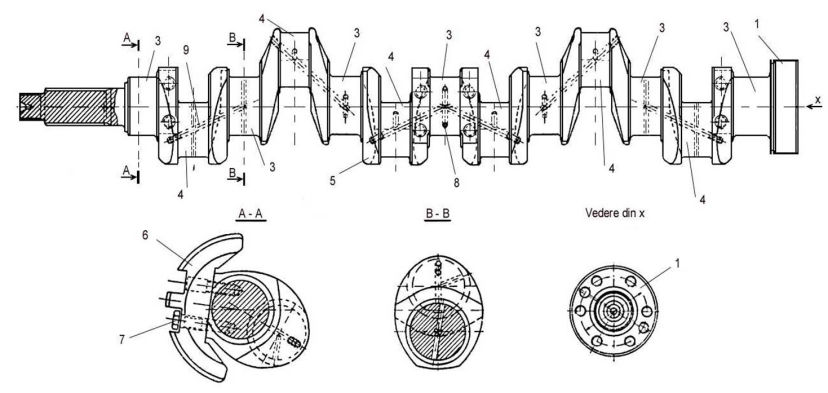1. Flanşă
2. Roată dinţată pentru conducerea axului cu came
3. Fusuri maneton
4. Fusuri palier
5. Braţele arborelui cotit
6. Contragreutate
7. Şurub
8. Intrare ulei în arborele cotit
9. Canale pentru ulei

